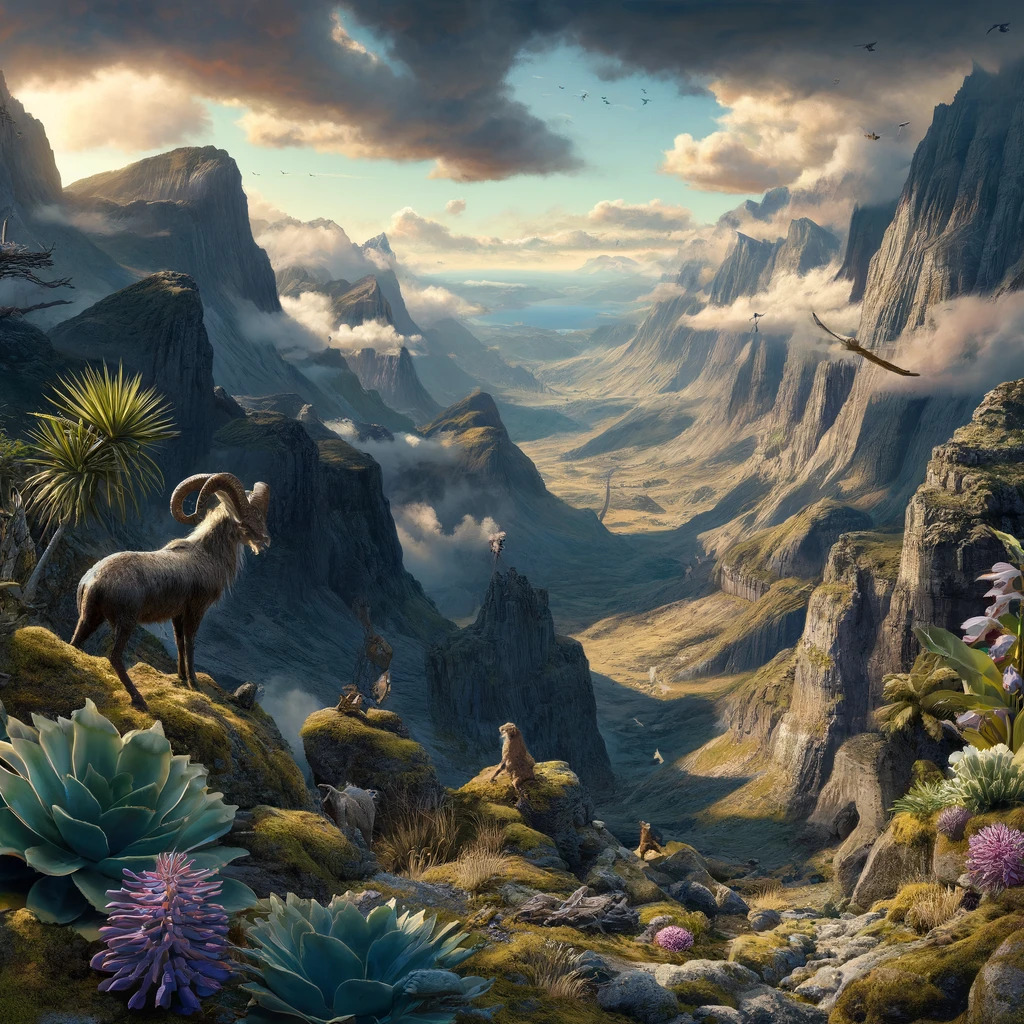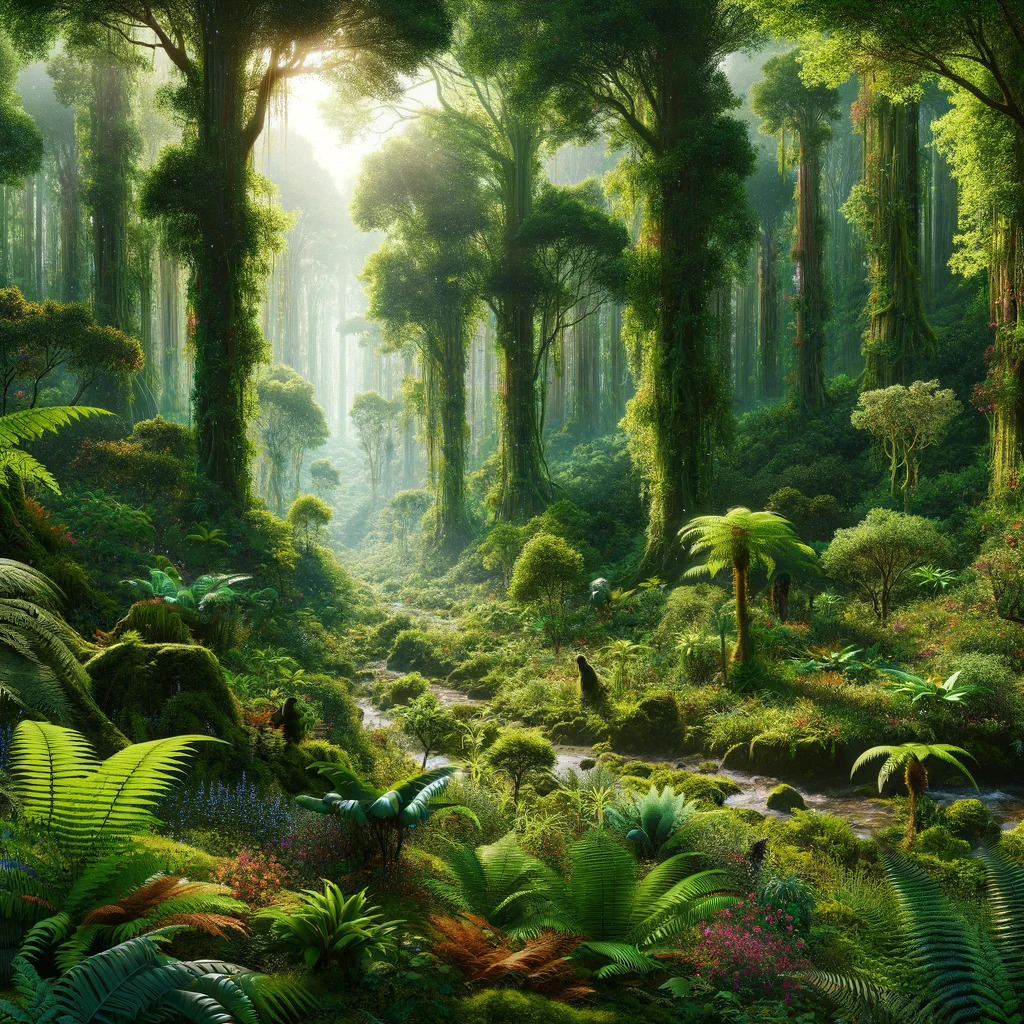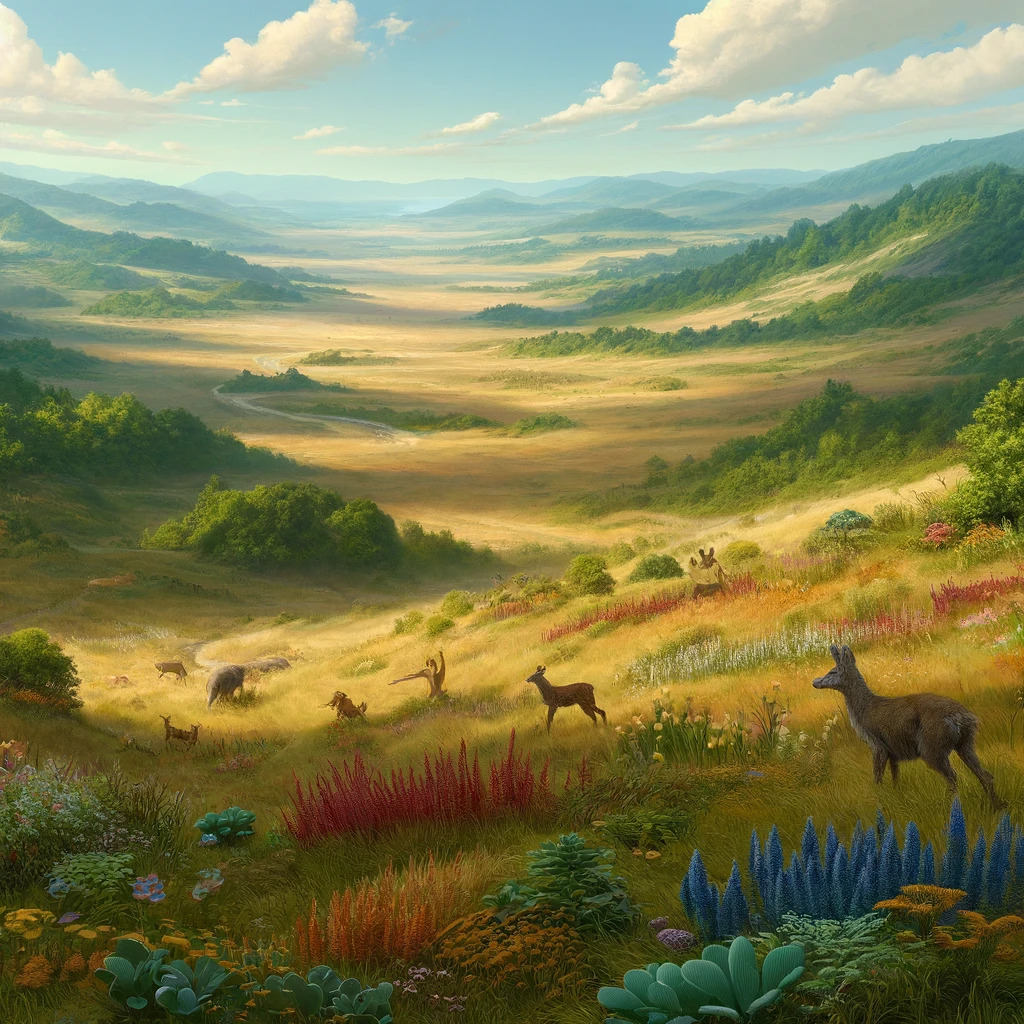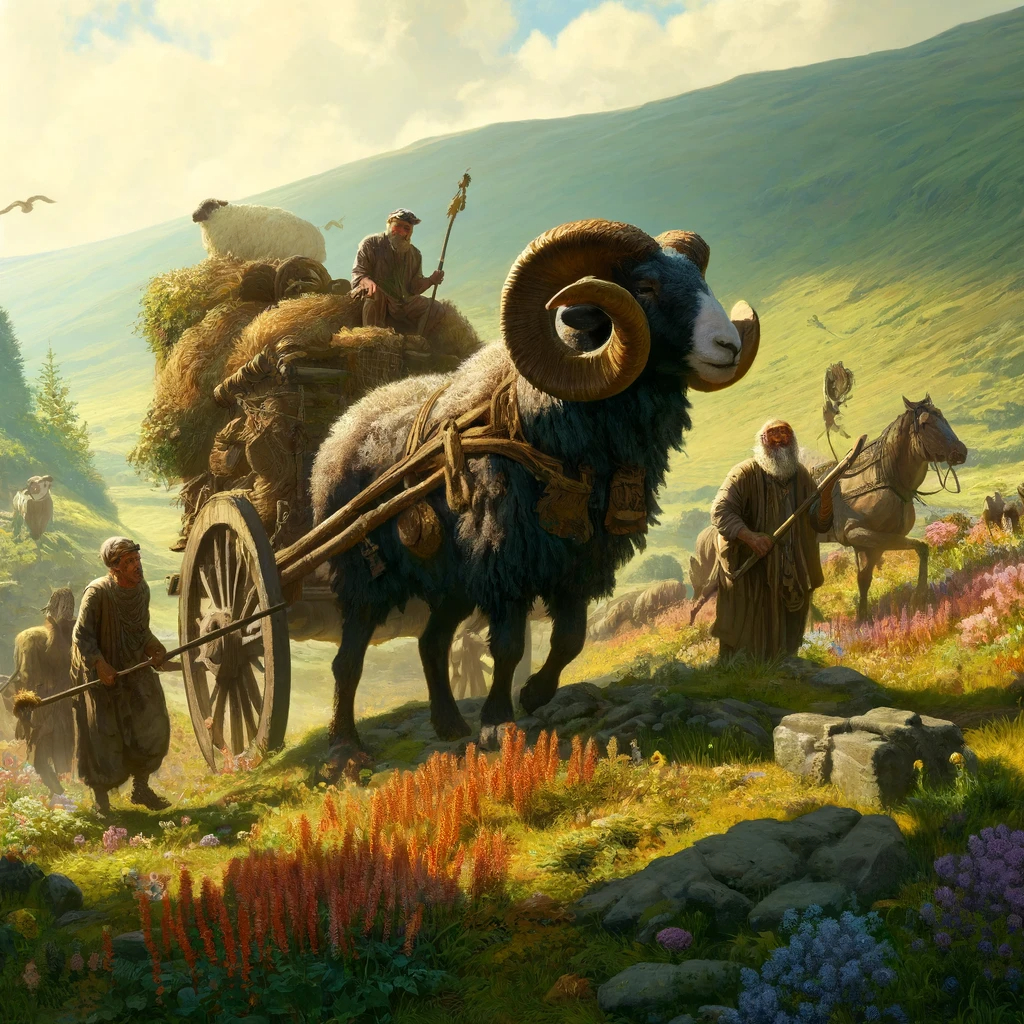The Eastern Region of Terrafract

Biomes
Coastal Shorelines

The Rocky coasts of the Eastern region endure the relentless beat of the ocean waves, creating a landscape of resilience and survival. Organisms here are adapted to withstand the powerful forces of the sea and the varying conditions of tides, making this biome a showcase of nature's adaptability and toughness.
Landmarks
The defining features of the Eastern coasts include rugged cliffs and rock formations that have been sculpted by the sea over hundreds of years. The dramatic arches, carved by the oceans waves, and the tidal pools which are rich in marine biodiversity serve as crucial points for the study and observation of marine ecosystems.
Highlands

The Mountainous Highlands of the Eastern region present a landscape of dramatic beauty, where rugged peaks pierce the sky, and steep cliffs offer breathtaking views. This biome is a challenging environment where flora and fauna must adapt to thin air, drastic weather changes, and rocky terrain. Unique alpine plants cling to life in crevices, while specialized animals navigate the steep slopes.
Landmarks
The Highlands and Mountains are characterized by their towering snowy peaks, deep valleys, and steep cliffs. The colder weather and rain patters have caused large lakes to form at higher altitudes. In addition, unique geological formations, such as basalt columns or granite outcrops, add to the distinctiveness of the terrain.
Temperate Forests

The Temperate Forests are a verdant oasis of biodiversity. Towering trees form a dense canopy, filtering sunlight to the myriad of plants and creatures below. This layered ecosystem supports a complex food web, from the forest floor up to the highest leaves. The interplay of light and shadow, the chorus of bird calls, and the rustle of unseen creatures make these forests a hub of life and activity.
Landmarks
The dense forests of the East are occasionally broken up by massive ancient trees. These trees, known as Grove Guardians, host large clearings around them. These trees are vital to this region becuase they create smaller ecosystems which cater to certain creatures and plants.
Rolling Meadows

The Rolling Meadows offer a stark contrast to the dense forests, with open skies and sweeping vistas. This biome is a quilt of grasses and wildflowers, buzzing with pollinators and grazed upon by roaming herbivores.
Landmarks
One of this biomes more defining features are its winding rivers which run throughout the meadows. These rivers provide a great space for plant life to flourish, making the biome a hot spot for grazers.
Weather
Weather patterns in this region are heavily influenced by its topography, with the mountains capturing moisture from the frequest coastal storms and dispersing it across various biomes of the region.


The mountains of the Eastern region act as natural barriers, trapping moisture from the coastal storms and creating a gradient of climatic conditions as one moves inland. On the windward side, the slopes receive abundant rainfall, nurturing dense forests and rich undergrowth. As the air rises and cools, it loses its moisture, leading to drier conditions on the leeward side, where the rolling meadows and highland plateaus are found. This orographic effect results in varied microclimates across the region, with the mountainous areas experiencing cooler temperatures and more precipitation compared to the sheltered valleys and meadows. The interplay of these elements contributes to the region's diverse ecosystems, with each biome responding to the unique weather patterns it experiences, shaping the flora and fauna that thrive there.
Culture/Community
The Eastern region of Terrafract, with its captivating landscapes and rich biodiversity, presents a paradox of beauty and peril. Its untamed wilderness, characterized by unpredictable weather and challenging terrains, has largely deterred widespread development. The violent storms, steep cliffs, and dense forests, while stunning, harbor dangers that demand respect and caution.
Despite these challenges, the region is not devoid of human presence. Adventurers and researchers are drawn to its untouched nature, eager to unravel the mysteries of its diverse ecosystems. Their expeditions are driven by a quest for knowledge, seeking to understand the intricate web of life that thrives amid the region's harsh conditions.
Settlements within the Eastern region are few and far between, typically found in areas where nature's grip loosens slightly. Those who choose to make this region their home are a testament to human resilience and adaptability. They have learned to coexist with the land, respecting its rules and rhythms.

One notable adaptation of these resilient communities is the domestication of the Stoneback Ram, a robust creature native to the region's highlands. These animals are invaluable companions, adept at navigating the rugged terrain and enduring the cold temperatures of the higher altitudes. Their sure-footedness and strength make them ideal for transport and labor, providing a crucial advantage in a landscape where the margin for error is slim.
Creatures and Plants
The mountains are home to resilient species like the Stoneback Ram and the Tidecrest Guardian, each adapted to the unique conditions...


For more detailed information about these creatures, head to the fauna section on the home page. Information about this regions plants can be found in the flora section on the home page.